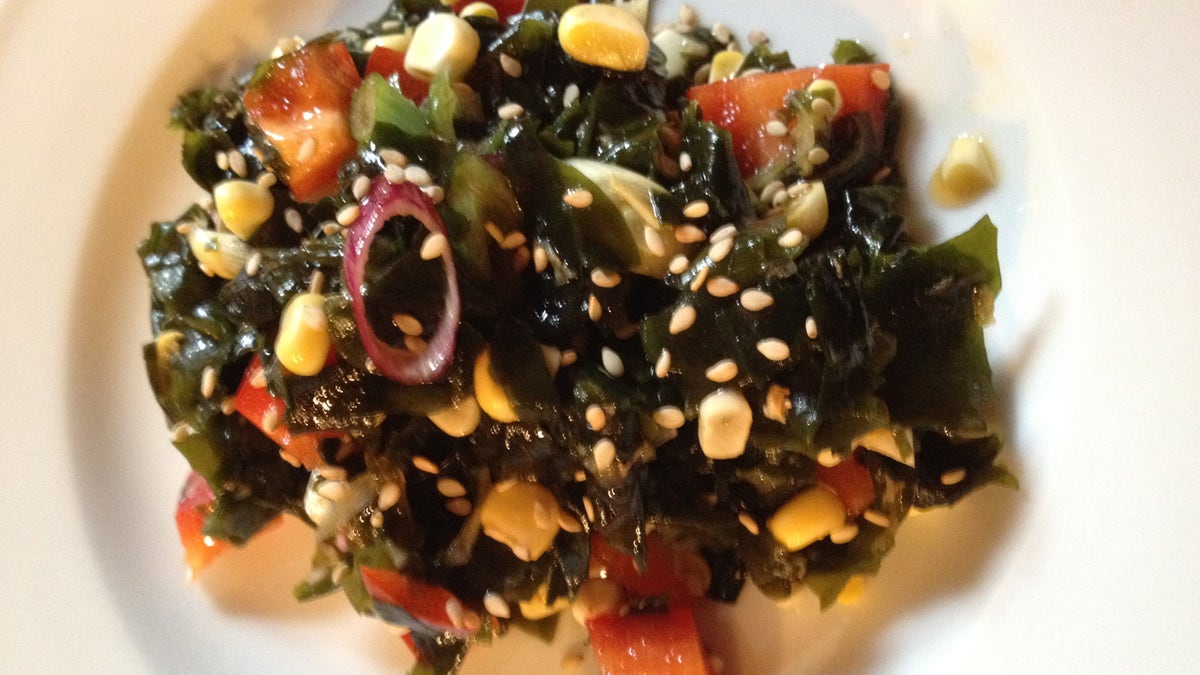
Move aside pomegranates, chia seeds, and salmon. There's a new superfood that’s being touted by nutritionists, health experts, and scientists as one of the best foods you can eat: seaweed.
That’s right. Macroalgae, those wild plants you’ve seen snorkeling, scuba diving, or washed up on the beach can make great summer salads, savory dishes, and even whipped up as dessert.
“The people that eat it every day or maybe even three times a week, are the healthiest and longest living people in the history of mankind,” according to Scott Kennedy, a sea vegetation advocate and founder and president of FarmaSea Health who says even small amounts can pay off big for your health.
The only plants which synthesize any significant amount of Vitamin D in their tissues, sea vegetables contain 90 percent calcium and magnesium. These super veggies also boast organically-bound vegetable iodine which is necessary for proper thyroid and brain function, sleep, a healthy weight and metabolism, as well as strong hair, nails, and skin. “It has every nutrient know in it,” Kennedy says.
Although sea veggies are good-for-you food, they’re not something most Americans would think of eating for dinner. The taste alone isn’t like cabbage or spinach and in fact, can be quite intense. “They definitely have a taste of them that’s not normal for the American palette,” according to Alexandra Jamieson, a chef, author and natural health expert, who says that except for nori and Irish moss types, sea veggies taste like the aroma of tuna fish.
Check out these simple and delicious recipes.
Recipe: Raw Chocolate Pudding with Irish Moss.
They may also seem like an obscure or hard to find item, yet most health food stores, Asian grocery stores, and Japanese fish markets stock seaweed. There're also available at reputable online retailers like Maine Coast Sea Vegetables and Eden Organic.
And despite their intensity, there are ways to make sea vegetables more appealing to the taste buds. Jamieson suggests trying milder types like nori and Irish moss and starting out by adding a couple of tablespoons to your meal.
Here are six of the most common types of seaweed and how to prepare and incorporate them into your favorite dishes.
Nori
The seaweed used in sushi, nori is available in dried sheets or flakes. It doesn’t need to be cooked and because it has a mild flavor, it’s a great choice to start using in recipes. Cut nori into thin strips and add it to salads or sprinkle nori flakes over popcorn. You can also grind nori and mix it into soups and bean and grain dishes.
Dulse
Flaked dulse is ready to eat, and like nori it can be used in soups, salads, bean and grain dishes. Consider adding dulse to sandwiches—even your kid’s peanut butter and jelly. Dulse also comes in dried sheets but you’ll need to soak it in cold water and add it to a cooking liquid to rehydrate and soften it. Check the package for soaking instructions.
Wakame
Have you ever wondered what the olive green veggie in your miso soup? That’s wakame. You toast wakame in the oven at 350 degrees for 5 minutes, then crumble it or pulverize it and make your own flakes to sprinkle onto your favorite dish. You can also add wakame to soup, but be sure to soak it in cold water. As the seaweed unfolds to expose its layers, clean any sand, seashell, or rock residue before cooking.
Kombu
Kombu, also known as kelp, is quite versatile and makes a great bullion alternative. Kombu enhances the flavor of any dish that has to be boiled or requires simmering. Add kombu to miso soup or to beans or grains when you’re cooking them from scratch, then remove it from the pot for a milder taste. Or if your favorite soup needs to simmer for several hours, simply add the kombu and it will break into tiny pieces. If you’re cooking with large pieces of kombu, be sure to wipe off the powdery white substance, which is extra minerals and salt. Kombu also makes for great chips (see recipe for Kombi chips).
Arame Sea Vegetable
These skinny black strands are actually a brown kelp that’s related to wakame and kombu. Simply soak, drain, and strain, and sauté arame with garlic, onion, and julienne carrots for a simple and delicious side dish.
Irish Moss
Like nori, Irish moss is mild and an easy way to prep your palette. Irish moss is available in whole dried, flake or powder form. Carrageenan, the gelling agent extracted from Irish moss is actually used in a variety of foods like beer, candy, ice cream, and salad dressings. And for the home chef, its gelling properties make it a great option for raw desserts like mousses and puddings.
